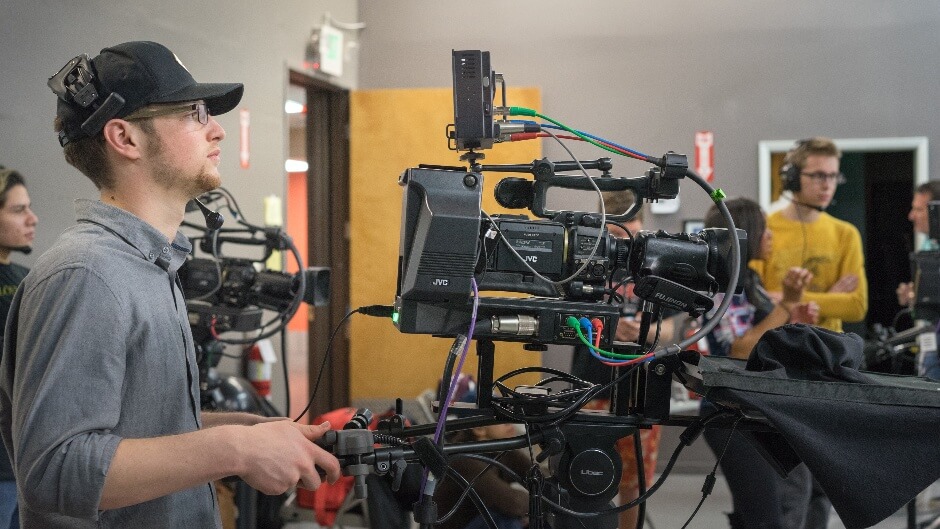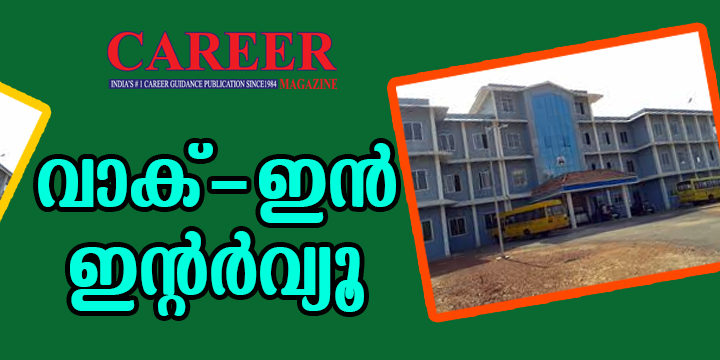Career in Cinematography

- H. Keswani
Giving visuals to the Director’s vision describes the role of a Cinematographer. A vocation that conjures up images of snow-capped peaks, low lying clouds in a mist captured in slow motion or time-lapse, action unfolding in hot sultry sand dunes, brightly lit comedy capers, moodily drawn images in shadows of a thriller. All of these aiding visually to the drama unfolding in a darkened theatre or in your dimly lit space in front of your viewing screens. One has to have a passion for cinema, the art and its history to thoroughly enjoy and take up Cinematography as a profession. Cinematographer, Director of Photography (DOP), and few other such titles go along with your name, in accordance to your experience and your seniority in the field. Living legend Roger Deakins says, “Apart from capturing the Director’s vision, the other part to figure out for the DOP, is the ‘style’ of the film… Cinematography, that’s just right for the film.”
In earlier 60’s to the 90’s, the cinema was totally analogue, everything from the shooting to editing, to sound and final release was on celluloid. Cinema had to its credit an overall history of 100 yrs and more, to have survived from its silent era to its 70 mm and IMAX extravaganza in the millennium. The format evolved from 8mm, to 9mm, then to 12.5mm and 16mm and 35mm and eventually got standardized as 8mm for home movies, 16mm for documentaries and low budget features, and 35mm for big theatre releases. As the digital era dawned, celluloid and mechanical movement cameras have got replaced with electronics and digital sensors instead. Basics are the same. Earlier, light passing through a lens attached to the camera hit and set off a chemical reaction to the celluloid strip. Now, in digital camera, light hits a sensor where science and algorithms set off a manipulation and replica of how the eyes see and perceive color.
After the Director and Art Director, the most important person then on the set was and now still is the Cinematographer. Their job profile entails thorough knowledge of film stocks available, kind of cameras and its functioning, understanding lighting to play with lights and shadows to evoke a mood, intrinsic design sense for sets or outdoor locations, and framing and composition to give meaningful visuals to the Director’s vision. Cinematography is taught as an art form and as a vocation at two prestigious Indian film schools – FTII (Film and Television Institute of India), Pune and SRFTI ( Satyajit Ray Film and Television Institute), Kolkata. There are introductory short courses available online on FTII website, under their initiative called SKIFT (Skilling India in Film and Television), which can help one decide if learning and practicing Cinematography as a profession is for you or not.
Cinematography then…
The motion picture industry has changed a lot in the past 10-15 years from the conventional way of celluloid base (the physical handling of camera negative and print film) changing to its current digital avatar. Courtesy: Britannica Films, ARRI. In the early days of cinema, only the Cinematographer during a film shoot would know what and how the scene in front of the camera was being captured, as it was his technical knowledge of film stock and processing of film and a keen eye, through the viewfinder, which helped him see the action unfold and get imprinted on the negative as the camera whirred. There was no other method to ‘monitor’ the day’s proceedings other than getting the day’s work processed in the laboratory and seeing the ‘rushes’ in the evening or the next day. Subsequently, as technology and electronics improved, the Director got a chance to “tap’ into the camera and ‘video assist’ became the norm in monitoring the day’s proceedings during a shoot. This was in early ‘70s and ‘80s. From the year 2000 onwards, the digital era dawned and completely changed the way films were shot, monitored and exhibited.
Cinematography now…
The new digital cameras and their recorded file systems eased the process and made it convenient to show the image to the camera team, the production team, the direction team and the Producers. Various tents and areas are created where different sets of people view the day’s proceedings and take collective decisions. The video assist person mostly catered to this, during the video tap days. But in this digital cinema age, there has to be more than just allowing yourself to be a Cinematographer. The 2-3 years spent in a film school learning about film-making and specializing in your craft gives you more opportunity than just being a ‘camera person’ that you do become. The knowledge you pick up also helps you in becoming an entrepreneur. The entrepreneurial list can also be, working with the following:-
- Steadicam or any image stabilizing equipment operator/provider
- Aerial and drone systems operator/provider
- Motion control systems operator/provider
- Lights rental house
- Camera equipment rental store
- Digital Imaging Technician (DIT)
- Colorist
- Post Production supervisor / technical expert for a channel or OTT
platforms
Among these options, the most lucrative one is DIT Colorist.
What and who is a DIT?
DIT is a term or a position given to that one person on the film set, who handles the exact BITS and BYTES transfer of your digital image acquisition from the camera (the image files) and also the simultaneous sync sound files from the audio station along with footage from the guy doing the ‘making’ of the film or the BTS (Behind the Scene) footage on a film shoot. Basically a data wrangler. Looks and sounds easy – copy and paste the image and audio file. Well, it’s a highly responsible job, once you know and understand the duties of a DIT and the stuff he or she does. You should be ready to slog and work from an outdoor location like a street, a parking lot, a remote corner of a constructed set or a plush hotel room, as may be demanded by the tough
outdoor/indoor locations of the film being shot. The need for the DIT came when the digital cameras were able to give out RAW and other optional digital file formats as image to the camera cards. These cards were similar to the earlier exposed film rolls. How to read them, how to see the true color rendition of the recorded shot in the camera was what the whole issue
was about and more.
Benefits of having a DIT on the shoot
Coordination of post production requires communication with a variety of different people, understanding expectations of each department like sound, edit, VFX and final color correction respectively.
Technical management and post production work flow: The process requires a person to liaison with all units including recipients of file based material at the end of the shoot, ruling out unforeseen surprises and cost. For example, what kind of transcoded files to make which are easy to use on any editing software. After the edit lock and EDL, will the RAW files match the proxy files and open up in a post production digital imaging facility later – one has to think that much ahead of the pre-production stage. The DIT also makes suggestions to shorten the post-production time according to the budget and easy turnaround with best RAW image options.
On Set Workflow: Ensuring correct use of camera technology (different cameras, formats, codecs, bit depth, transfer data rate etc). Security of footage transferred (a day’s costing for the shoot depends on this simple but highly crucial process), so right gear and equipment for the above job is the key.
Dragging and dropping the files from the camera card is the unsafe method to do the transfer. Ancillary softwares with ‘check sum’ facility are needed to correlate bits and bytes as recorded and as transferred and backed up. Guaranteed transfer of every bit of shot material on the recorded camera card to a safe sturdy hard drive and its backups. Visual verification of transferred material in a quickest manner possible so that timely intervention is done in case of anything going wrong, before any setup is changed during a shoot. Earlier, during a video tap it was an auto exposure recorded footage
on tape or a DVD disc, not helping you judge the accuracy of aperture, contrast
and legal limits of highlight and shadows, which now is possible in real time.
Securely backing up the day’s work effectively as master backup and two backup copy using paid software such as Shotput Pro, Silverstack or DaVinci Resolve free version for cloning.
DIT caters to the DOP and the Cinematographer by supervising a team of assistants and focus puller to check technical consistency of the digital camera codecs, aspect ratio, file formats, naming conventions and warn the team of any issue coming up, handling multiple formats and different cameras, matching look and consistency, designing a LUT along with the DOP.
Any mistake or oversight (soft focus, dead pixels, dirt on lenses or filters etc.) spotted at the shoot stage is better than spending millions later to correct
them. The DIT works with the production team and Producers by safely giving back ups and answering questions and doubts regarding technical aspects of digital cinema for the uninitiated. DIT caters to the Director by lining up the edit or day’s rushes to evaluate at home. DIT caters to the first Assistant Director/ Script Supervisor/ first and second assistant camera to check all mentioned shots in continuity and to ensure that script supervisor reports and camera reports have been transferred before the camera cards are given back for reformatting. DIT helps the editing crew in transcoding proxy files of the day’s work to be easily playable on edit software. So the basic elements that the DIT should be able to provide is – security of footage, transcoding of footage in any easily playable codec for edit or daily rushes, on-set color management, for ‘Look’/applied LUT in consultation with DOP, and Live raw assessment for quick turnaround of location and setup change.
DIT setup
Depending on the above, the team can decide, as per the budget of the
production, an independent setup or a setup for mid level or high budget film, whether the production has a need of just a data wrangler to just transfer copy backup of footage, or a DIT along with the data wrangler for quality control of footage and transcoding, or a Senior DIT – all of the above and on set color management and workflow involvement. Depending on the above 3 scenarios, the person will be coming to the set with necessary hardware, software options, justifying their involvement and the budget.
Qualities a DIT must have
Thorough knowledge of the science of digital filmmaking is a must. A
cinematography student or a practicing professional is best suited for this job as one has to have that knowledge of all digital cameras, knowledge of computers and its associated hardware and software and also of color theory. This can later create an opportunity for growth as a Colorist too. Most importantly, a DIT should posses the skill of an effective team member and have the ability to take certain decisions which can save the day and money on a film set. Basically, apart from creating backup of the footage for the Producers, the DIT liaisons with the DOP and his team to get the best out of the camera. The DIT should understand that the DOP may and will have a decent knowledge of all of the above, but they may be involved deeply into creating images and completing the day’s work for the producer/director. One should not be flaunting one’s knowledge and position on the sets, because in the hierarchy, the DOP is much above the DIT. The DIT team has to be discreet in their approach to point out mistakes or accidents happening. DIT person should have the understanding of color and color space (shooting,
viewing, display and deliverable color space) to be able to provide a look or a color to the RAW images being shot, which is a big help on set, to apply a predetermined ‘look’ or a LUT, or create one for the DOP/Director and also a ‘look’ laden transcoded shots for the edit.
At present there is no specialized course for DIT from any recognized institute. Private film school Whistling Woods International
(WWI), Mumbai, may be adding the inputs about DIT in their curriculum, anytime soon in their coming academic year. For most who may not have Cinematography studies as a background, it is learnt on the job as an Intern to a team of Colorists in a post-production house or by picking up knowledge and equipment being a Camera Assistant/Associate. In these regards, Sid Meer, owner and colorist of Bridge Postworks, has a dedicated team of DITs, who go on shoots and some of them later work as Colorists for the DI of the same asset. As Sid Meer says, they are open to taking interns and assistants and full-fledged DITs who have it in them to make a mark.
Along with Sid, there is Neil Sadwekar, who is in the business for almost 10 years, working as a consultant and a DIT on 60 features, providing data and workflow management services to the Indian film community. It is not necessary that only a cinematography student/professional can work as a DIT.
It can even be a video editor or a sound person too, combining their respective editing and audio skills and knowledge of working on NL Edit/sound software systems. One should basically be in love with filmmaking and have an interest in this sort of work. According to Neil Sadwekar, he has given alternate career openings to many fresh editing graduates of FTII and WWI. So the best option after your Graduation, is to learn Filmmaking and your specializing craft ( a must ) from a reputed Institute like FTII, Pune or SRFTI, Kolkata and other regional and private institutes. As Neil adds, this background helps in being a DIT and get good introduction to the workflow, make contacts amongst producers, travel the world and settle down as DOP/Editor or continue as a DIT and embark upon a remarkable career option suited so well to the current ever-changing digital cinema requirements.
Trivia
- Director Blake Edwards was the first to use the beam-splitter single-camera system invented by engineer Jim Songer in the 1968 film The Party
- In India, R.M.Rao, FTII alumni and a known advertising films Cinematographer, brought in the then new and innovative ‘video assist’ in 1992 from Germany through ARRI, as he owned cine cameras and put on rent his Arriflex Arri 3 and Arri 435 with flicker free video assist later in 1996.
H. Keswani : Brief Intro
Keswani is an alumni of FTII Pune, ‘87 batch, his specialisation being Cinematography. He is a Working Professional in Mumbai as Director of Photography having worked on Features, Ads and TV serials.
Currently he is Associate Professor in FTII, cinematography department, having done a brief teaching stint at Whistling Woods too. Hiroo has recently shot for a feature production titled Torbaaz, directed by Girish Malik, starring Sanjay Dutt, which is currently streaming on Netflix. Participating in 3 workshops with Film Heritage Foundation India and FIAF, a Martin Scorsese initiative, he has also been working as Film restoration consultant having digitally restored films for Vinod Chopra, Raju Hirani, PLA Films,Sanjiv Shah and Milind Ranade, to name a few. Currently working at NFAI for their digitization project.





